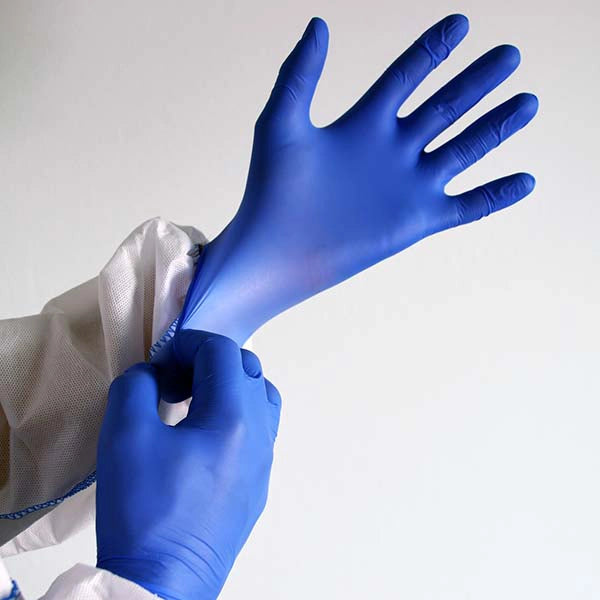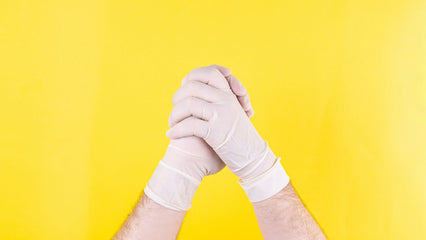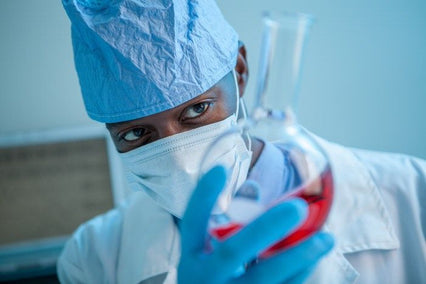Food establishments are every person's go-to whenever they are hungry, waiting for someone, wanting to kill time or even trying out new spots. However, people are still concerned if they are receiving safe and clean food products. Therefore, proper food hygiene and safety practices are essential for any restaurant. They protect the customers and the food employees and help maintain a positive reputation for the business.
Food establishments must take many precautions to protect their customers from foodborne illness outbreaks. There are many specific items that restaurant workers must keep track of to maintain a safe and clean food establishment. One such item is gloves. While gloves are generally not complicated, there are some recommended food handling practices for their proper use in food establishments that all workers should be aware of. This blog post will review these guidelines to ensure you use gloves correctly in your workplace.
Why Wear Gloves When Handling Food
One of the most important reasons to wear gloves when handling food is to protect your hands from bacteria, viruses, and other contaminants. Your hands can come into contact with a lot of stuff when you're cooking, and if you're not wearing gloves, there will be an increased risk of contamination. Those contaminants can quickly transfer to the food.
Another reason to wear gloves when cooking is that they protect your skin from heat, steam, and various kitchen chemicals. If you're handling hot food or working with harsh chemicals, gloves can help keep your hands safe.
Lastly, and most importantly, it helps keep the food clean and free of dirt, grease, and other debris. Lastly, it also prevents the transfer of oils and flavors from your hands to the food.
The Risks of Not Wearing Gloves When Handling Food
It's essential to wear gloves when handling food to avoid contamination and protect your hands from bacteria, viruses, and other dangerous pathogens.
Having bare-hand contact with feces, saliva, blood, vomit, and other body fluids can cause the growth of bacteria - resulting in bad food. Gloves also keep food from coming into contact with your skin which can lead to the spread of disease.
Wearing gloves when handling food is especially important if you have a cut or open sore on your hands, as this provides a pathway for bacteria and viruses to enter your body. It's also important to change your pair of gloves often if you are working with multiple types of food or if they become wet or dirty.
Situations in Which the Food Handler Must Wear Gloves
Many different tools, appliances, and kitchen gadgets can be utilized to keep food service operation areas clean and safe for workers. However, they have the potential to harbor harmful bacteria that cause food poisoning or contamination of food if not handled appropriately.
One of the best instances of this is the employment of gloves in the food industry. To some extent, gloves can prevent the spread of germs that cause food poisoning, but inappropriate use and lack of standards can worsen the problem. Therefore, the food handling staff should always be informed of the regulations requiring glove use.
As was previously noted, no hard and fast rule stipulates gloves must be worn at all times when handling food. When food service employees have cuts, burns, or other open wounds on their hands, they are only required to wear gloves. Wearing nail polish in a commercial kitchen is not allowed, but if a worker insists on doing so, they should at least wear gloves to prevent the polish from getting on the food they handle.
Food handlers must generally wear gloves when contacting ready-to-eat foods, raw foods, and unwashed produce. There are a few exceptions to this rule: if the food handler is wearing a glove on their non-dominant hand and it is accidentally contaminated with food, if they are cleaning their workstation, or if they are transferring food from one container to another.
Still, gloves aid in maintaining a clean and safe atmosphere when preparing and serving meals. Using it properly can lessen the amount of hand-to-food contact during meal preparation. However, wearing gloves might give people a false sense of security and increase the risk of food poisoning.
If you're unsure whether to wear gloves while handling food, it's always best to play it safe and put them on. However, you can never be too careful when it comes to keeping your customers safe and healthy.
Types of Recommended Food Service Gloves
There are a variety of food service gloves that can be used, depending on the type of food being handled. For example, latex gloves are best for tasks such as handling raw meat, as they provide an effective barrier against bacteria. Whatever the task, it's essential to ensure that food service workers use the appropriate gloves to minimize the risk of contamination.
Poly Gloves
Poly gloves are great for light-duty chores like stacking sandwiches and tossing salads. These gloves are thin and comfortable, with a relaxed fit that allows air to circulate.
Vinyl Gloves
Vinyl gloves are available in various sizes and colors and are ideal for use in the kitchen when things get a little messy. They fit snugly, making them perfect for keeping hands safe while working with sticky ingredients like cake batter or egg whites.
Nitrile Gloves
These sturdy gloves are a must-have if you work in the food service industry and find yourself chopping onions or hot peppers. Food-safe nitrile gloves that fit snugly and are perfect for detailed work. They are a suitable replacement for people with an allergy to latex because of their similar snug fit.
Note: It's best if restaurants avoid latex gloves: Prolonged use of latex gloves by those who handle food poses a risk of latex allergy development; roughly 10% of the population is considered to be susceptible to such allergies.
Read More: Best Disposable Gloves for Cooking
How to Use Gloves for Food Prep
When it comes to using gloves for food service prep, there are a few things to keep in mind. First, ensure that the gloves you're using are food-safe and meant for contact with food. It's also essential to prioritize washing hands first before putting on gloves, as dirty hands can contaminate the food.
Once the gloves are on, be careful not to touch your face or hair with them, as this can also introduce bacteria into the food. When you're done using the gloves, make sure to wash your hands thoroughly and dispose of the gloves properly.
When switching food tasks (such as when transferring to a new workstation, after handling raw meats, before taking ready-to-eat food like sandwiches, after cleaning activities, etc.), a new pair of gloves must be worn.
- After removing gloves and covering the mouth when sneezing, coughing, blowing your nose, or touching your hair (again, wash your hands afterward).
- If possible, do so frequently. Wearing gloves continuously for more than four hours is not recommended. If you wear the same gloves for a long time, your hands will sweat more than usual, creating an environment where bacteria can thrive. If you wear gloves for too long, they may develop leaks or tears.
- Disposable gloves are intended for single use only.
FAQs
What gloves are safe for food handling?
When looking for gloves to wear while handling food, choosing a pair that will not contaminate the food with oils, chemicals, or other substances from the gloves is important. Food-safe nitrile gloves are a good option because they are latex-free and do not contain any harmful chemicals. They are also thicker than other types of gloves, making them less likely to tear.
Can chefs handle food without gloves?
When cooking, gloves aren't required for all chefs. More crucial than wearing gloves while handling raw food is regular and thorough washing of hands. Rather than being a mission-critical food service task, donning gloves is more accurately described as a necessary precaution. Although wearing gloves provides some safety measures, it is not a foolproof guarantee that the food being cooked will not be tainted. In some states, what is required is for a chef to wear gloves when preparing any cooked or ready-to-eat food before putting it on a platter.
Is it OK to handle food with your bare hands?
It's generally not a good idea to handle food with your bare hands, as it increases the risk of contamination. Meat and poultry should always be handled with gloves and should be washed thoroughly before being eaten. Even if you don't eat the food yourself, it's important to remember that you may come in contact with it, later on, so always wash your hands after handling any kind of raw meat or produce.
When should I wear gloves when cooking?
Most people wear gloves when cooking because they are either dealing with raw meat or poultry or working with a substance that could potentially cause skin irritation. For example, if you are chopping onions, you might want to wear gloves because the sulfuric compounds in the onions can cause skin irritations. And if you are handling raw chicken, it's a good idea to wear gloves so that you don't contaminate any other food with bacteria from the chicken.
Shop for Food Service Gloves
Proper use of gloves in a food establishment is key to preventing the spread of harmful bacteria. To ensure that your gloves provide the best protection possible, follow these guidelines in your business. Gloves.com carries a wide variety of gloves made specifically for food service, so be sure to shop our selection and find the perfect pair for your needs. We offer a range of gloves for food service including dishwashing gloves, food prep gloves, an more.




